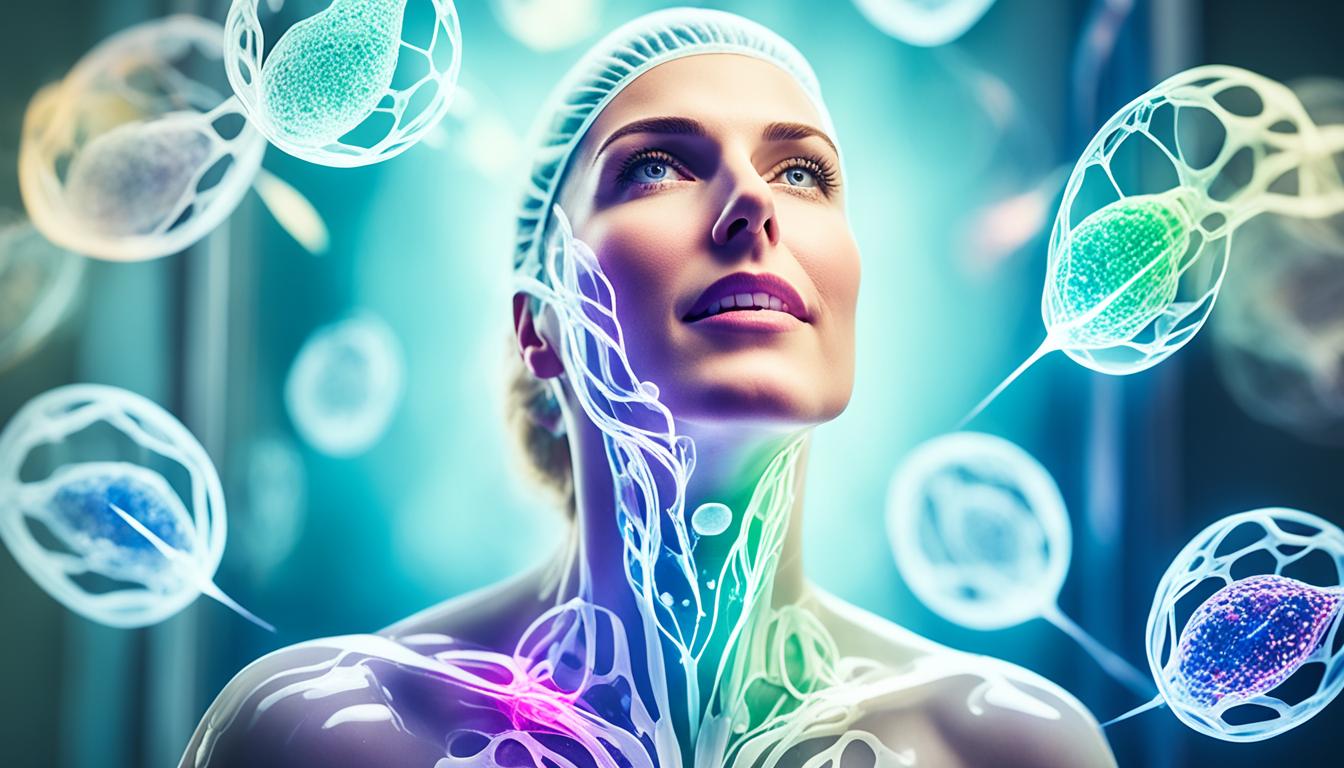Gender dysphoria makes individuals feel uncomfortable because their gender identity is different from their birth sex or body. It can happen to people who are transgender or gender-diverse. This can happen to anyone at some point in life.
The DSM-5 helps doctors diagnose gender dysphoria. This diagnosis is key so that people can get the right healthcare. It’s important to know the symptoms as they can greatly affect someone’s life and health.
People with gender dysphoria might feel a big difference between how they feel and their assigned gender. They might want to look like another gender. This can cause a lot of distress and problems, like trouble at school or work, issues with relationships, and mental health problems like anxiety and depression.
Right now, there are many ways to treat it. But one new idea is stem cell therapy. In places like Thailand, researchers are looking into this. They hope it can offer new treatment options and help improve the lives of those with gender dysphoria.
Key Takeaways:
- Gender dysphoria happens when your gender identity doesn’t match your birth sex.
- Its symptoms include feeling very different from your gender assigned at birth and wanting to look like another gender.
- The DSM-5 gives a diagnosis for gender dysphoria to help get the right care and treatment.
- Having gender dysphoria can make school or work hard and cause mental health problems like anxiety.
- Stem cell therapy is a new approach to treating gender dysphoria that’s showing promise.
Understanding the Causes of Gender Dysphoria
The reasons behind gender dysphoria are not completely understood. It used to be seen as a mental health issue. Now, we think there’s more to it.
Research shows gender dysphoria can be linked to how our gender identity forms before birth. Genetic elements are also important. The chromosomes we get from our parents decide our body’s sex.
Problems like hormone imbalances or being exposed to certain drugs in the womb might cause gender dysphoria. Conditions such as congenital adrenal hyperplasia (CAH) are tied to it too. So are conditions where someone is born with parts of both male and female bodies.
Figuring out the root causes of gender dysphoria is vital. It helps medical professionals create better care plans for those affected. Every person’s situation is unique, and knowing the causes lets us provide the right kind of help.
More research is needed to fully grasp the reasons behind gender dysphoria. This work will lead to better ways to diagnose, treat, and support those seeking gender affirmation. It’s crucial for their well-being.
Diagnosis and Treatment of Gender Dysphoria
Diagnosing gender dysphoria is key to getting the right care for people. The DSM-5 lists what’s needed for a diagnosis. It talks about how people feel about their gender, and the need to change their physical features.
Treatments for gender dysphoria focus on easing the stress and helping people match how they feel with how they look. Hormone therapy helps create physical traits that fit a person’s gender better.
Surgical options can include surgeries to shape the chest or genitals, make the face more feminine, or change the voice. These are based on what each person desires.
But it’s not just physical help that’s important. Talking to someone about how you feel can make a big difference. Mental health services offer this to support people with gender dysphoria.
WPATH gives guidelines for the care of transgender people. These rules aim to make sure they get respectful and right healthcare during their transition.
Still, finding help for gender dysphoria can be tough. The lack of understanding and help can put up walls. Healthcare systems need to focus more on helping transgender people, making sure they find the support they need.
Getting the right care is vital. Without it, people with gender dysphoria might struggle with mental health, even think about suicide. Good healthcare and support can make a big difference in their lives.
Treatment Options for Gender Dysphoria
| Treatment | Description |
|---|---|
| Hormone Therapy | Administration of hormones to induce secondary sex characteristics aligned with the individual’s gender identity |
| Gender-Affirming Surgeries | Surgical procedures to modify the individual’s physical characteristics to align with their gender identity |
| Psychological Support | Therapy and counseling services to help individuals navigate gender dysphoria and develop coping strategies |
Conclusion
Gender dysphoria is a condition that can cause a lot of distress. It affects different parts of a person’s life. We are learning more about its causes. Research shows it could be linked to both mental health and biology.
It’s crucial to diagnose and treat gender dysphoria. This helps those going through it get the care they need. New treatments, like stem cell therapy, give hope for better lives for people with gender dysphoria.
Support for gender dysphoria is very important. This includes both medical and mental health care. It’s vital that transgender individuals can get help from healthcare professionals who understand their unique needs. With the right support, they can lead happy and satisfied lives.

